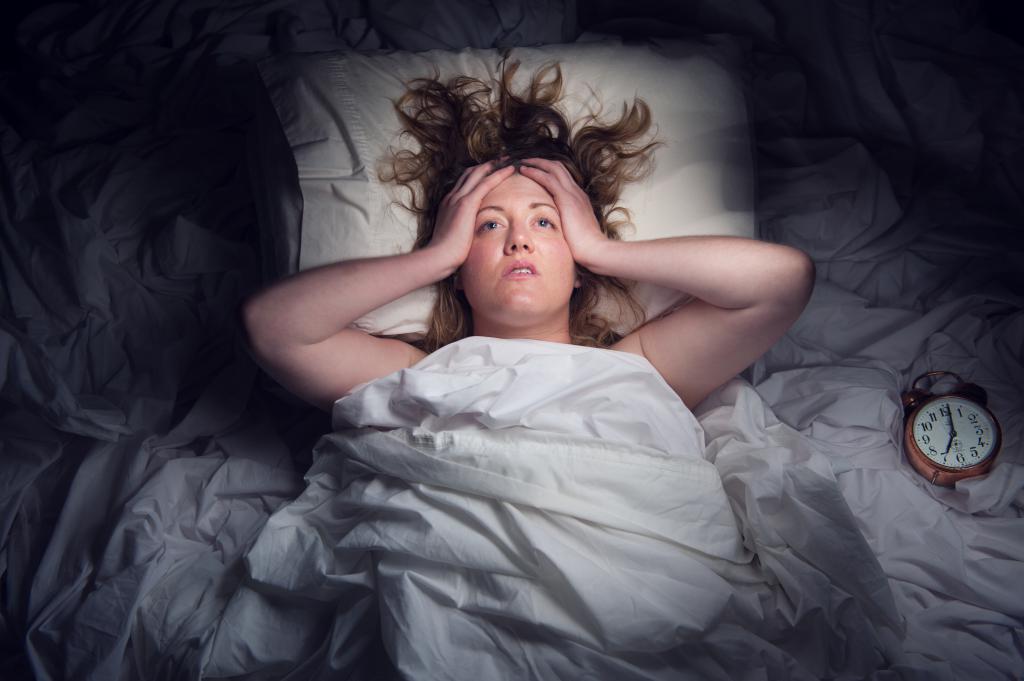A very common problem in today's world. Similar complaints come from about 10-15 percent of the adult population, about 10% of people on the planet use various sleeping pills. Among the elderly, this figure is higher, but violations occur regardless of the years lived, and for a certain age category, their own types of violations are characteristic. For example, night terrors and urinary incontinence occur in children, insomnia or pathological drowsiness in the elderly. There are disorders that, having appeared in childhood, accompany a person all his life. For example, narcolepsy.
Primary and secondary violations
Sleep disorders are classified into primary and secondary. The former are not associated with the pathology of any organs, but the latter arise as a result of various diseases.
Sleep disorders can also often occur with problems with the central nervous system or mental disorders. With many somatic diseases, a person suffers from pain, shortness of breath, cough, and does not sleep at night.
Drowsiness is often manifested in cancer patients due to intoxication. Pathological drowsiness can be a symptom of hormonal disorders in tumors, encephalitis.
Classification of sleep disorders

Doctors distinguish several main types of such violations. Consider the most common.
Insomnia is a disturbance that occurs in the process of falling asleep, provoking prolonged insomnia. Often they are associated with therefore can occur temporarily as well as permanently.
Often, insomnia is caused by such causes of sleep disturbance as the use of medications or alcohol. Insomnia is provoked by: chronic alcoholism, long-term use of drugs that depress the central nervous system, abrupt withdrawal of sedatives or sleeping pills.
Another variety is called hypersomnia. This is increased sleepiness. Psychophysiological may be associated with a psychological state, may be caused by alcohol or medication, mental illness, narcolepsy, and other pathological conditions.
Sleep disturbances lead to disruptions in wakefulness and sleep patterns. Parasomnia is also widespread, that is, a malfunction in the functioning of human systems and organs associated with awakening or sleep. Causes of sleep disturbance: somnambulism, night terrors, urinary incontinence, epileptic seizures that occur at night.
Symptoms

Symptoms are varied, depending on the type of sleep disorder in adults or children. It is worth noting that any sleep problems can soon lead to a change in the emotional state, a decrease in attentiveness and performance. Schoolchildren may have problems with studying and mastering the material. Often the patient turns to the doctor for help, not suspecting that the reasons lie precisely in insomnia.
Let us now analyze the symptoms in more detail, considering what consequences they lead to. or insomnia may be considered non-chronic if it lasts less than three weeks. People who suffer from sleep disorders - insomnia, at first can not fall asleep, and then constantly wake up in the middle of the night. Often they wake up early in the morning in a broken state, not getting enough sleep, and this leads to emotional instability, irritability, and chronic overwork.
The situation is aggravated by the fact that patients with these problems with increasing anxiety wait every night, imagining what it will lead to. At night, time passes much more slowly, especially when a person suddenly wakes up and then cannot sleep at all. His emotional state is oppressed under the influence of various psychological factors.
Often, after the stress recedes, sleep also normalizes. Often, problems with falling asleep become a habit, the situation only gets worse, and constant insomnia develops.
Insomnia, which is caused by alcohol or medication, often leads to the fact that the phase of REM sleep is reduced, because of this, the patient begins to wake up regularly at night. If you stop drinking alcohol for a long time, the body will return to a normal rhythm in about two weeks.
When sleep disturbance in adults is the result of taking strong drugs that affect the nervous system, the effect of such a drug decreases over time, and increasing the dose can only lead to a temporary improvement in the situation. Sleep problems may get worse even though the dosage is increased. In such a state, a person often wakes up, a clear boundary between the phases of sleep disappears.
In mental illness, insomnia is accompanied by a feeling of great restlessness at night, as well as superficial and very sensitive sleep. A person often wakes up, feels tired and lethargic during the day.
The diagnosis of "sleep disorder" is made with the so-called sleep apnea syndrome. At this time, the flow of air in the upper respiratory tract temporarily stops, such a pause may be accompanied by restlessness or snoring. Physicians distinguish between obstructive sleep apnea, which occurs due to the closure of the lumen of the upper respiratory tract during inhalation, and central sleep apnea, which are usually associated with disorders in the respiratory center.
Restless legs syndrome can also often lead to insomnia. It occurs deep in the calf muscles, constantly requiring the body to move its legs. Such an uncontrollable desire often occurs before bedtime.
Another cause of sleep disturbance lies in the involuntary flexion movements that occur at night in the leg, and sometimes in the big toe or foot. Such bending can last about two seconds, and be repeated after half a minute.
Narcolepsy

In narcolepsy, the disorder is characterized by sudden attacks of falling asleep during the daytime. Such violations are usually short-lived, they can occur during a trip on public transport, after eating, due to monotonous work, and sometimes due to prolonged physical activity.
In this case, narcolepsy is often accompanied by bouts of cataplexy. This is called a sharp loss of muscle tone, because of which the patient may even fall. An attack is usually associated with a pronounced emotional reaction, such as laughter, anger, surprise, or fright.
Insomnia is often caused by disturbances in wakefulness and sleep patterns. This happens when changing time zones or a constant schedule of intense shift work. Such problems disappear after two or three days.
In medical practice, there is also a delayed sleep period syndrome, which is characterized by the physical inability to fall asleep at certain hours. Because of this, it is not possible to establish a normal regime of rest and work on working days. Patients with such a disorder manage to fall asleep no earlier than two in the morning or even in the morning. Only on weekends or on vacation they have no problems with sleep.
Rarely turn to a specialist when identifying the syndrome of premature sleep. Although outwardly he may not bother them at all. The patient falls asleep quickly, has a good night, but wakes up too early and then goes to bed early. Such disorders are usually found in people of advanced age and do not cause them much discomfort.

Rarely, but still there is a syndrome of non-24-hour sleep, due to which a person cannot live in the mode of a normal day. The biological day of such patients increases to 25-27 hours. Such disorders are popular among people with personality disorders and the blind.
Sleep disturbance during menopause is common. It is with menopause that restless legs syndrome manifests itself. During this period, the level of the main female sex hormone, estrogen, drops sharply. This is what causes insomnia and other sleep problems. Doctors advise during menopause to go to bed early, eliminating all unnecessary light sources, and start preparing the body for sleep from 7 pm. If you still need to work in the evening, then try to use directional light by turning off the centralized lighting in the room.
Children's problems
Sleep disorders in children are most often caused by several diagnoses. One of them is somnambulism, which, manifested in childhood, can accompany the patient all his life.
The essence of the disease lies in the unconscious repetition of certain actions during sleep. Such people can get up at night, walk around the room, perform some kind of action, absolutely not realizing it. At the same time, they do not wake up, and attempts to wake them up can lead to actions that are dangerous to their life and health. Most often, this state lasts no more than a quarter of an hour. After that, the person returns to bed and continues to sleep, or wakes up.
Often occur that occur in the first hours of the patient's sleep. He may wake up in a panic in the middle of the night. Such conditions are accompanied by rapid breathing, tachycardia (strong heartbeat), sweating, while the pupils are dilated. Only after calming down and coming to his senses, the patient can fall asleep. In the morning, memories of a nightmare may not remain at all.
Urinary incontinence at night is observed in the first third of sleep. Such a sleep disorder in children belongs to the category of physiological, if they are very small, and pathological, if the child has learned to go to the toilet on his own.
Diagnosis of insomnia

In order to find out what to do with sleep disorders, it is important to conduct a correct diagnosis. Until now, polysomnography remains one of the most common research methods. It is carried out in a special laboratory in which the patient stays overnight.
A somnologist conducts research. Now it is clear which doctor treats sleep disorders. If you have such problems, you need to contact a specific specialist.
During the diagnostic process, the patient sleeps in a special laboratory, and his sleep is monitored by a large number of sensors that record cardiac activity, bioelectrical activity of the brain, respiratory movements of the chest, air flow inhaled and exhaled during sleep, and the process of blood oxygen saturation.
Everything that happens in the ward is recorded on a video camera, a doctor on duty is constantly nearby. Such a detailed examination makes it possible to thoroughly study the state of the brain, how all body systems function at each of the five stages of sleep, determine what deviations from the norm exist, and, accordingly, find the causes of your problems.
Another diagnostic method is called the average sleep latency study. It is usually used for excessive sleepiness, it is extremely important in determining narcolepsy.
The essence of the study is five attempts to fall asleep, which are necessarily carried out during the hours of normal wakefulness for a person. Each attempt is given 20 minutes, with a break between them of two hours.
Particular attention in this method is paid to the average sleep latency - this is the time it takes for the patient to fall asleep. The norm is 10 minutes. If it is in the range from 5 to 10 minutes, then this is a borderline value, and less than 5 minutes is already pathological drowsiness.
Treatment of insomnia and its consequences
Another doctor who deals with sleep problems is a neurologist. The treatment for the sleep disorder that he will prescribe will depend on the identified causes. If somatic pathology is detected, therapy will be aimed at combating the underlying disease.
If the depth of sleep and its duration decrease due to the age of the patient, then such a process is considered natural, usually requiring only an explanatory conversation with the patient.
If you can't sleep

It is important to monitor the patient's compliance with the general rules of healthy sleep before starting treatment with sleeping pills. A person should not try to fall asleep in an overexcited state or when he is angry, do not eat a lot before going to bed and do not drink alcohol at night, do not drink strong tea and coffee a few hours before going to bed, do not sleep during the day. Keep fit, exercise, but do not do any exercise at night. Keep your bedroom clean and tidy.
If you have problems with sleep, then it is recommended to go to bed and get up at about the same time, and if you still can’t fall asleep within half an hour, then you should get up and do abstract things. The desire to sleep should appear by itself. Nightly soothing treatments such as a warm bath or a walk are recommended. Relaxation techniques and psychotherapy help to cope with insomnia.
Drugs for insomnia
Pills for sleep disorders are often referred to as benzodiazepine drugs. During the disruption of the process of falling asleep, drugs with a short duration of action are prescribed. These include Midazolam and Triazol. Due to their intake, the likelihood of side effects increases - amnesia, confusion, excessive excitement.
Long-acting drugs include Flurazepam, Diazepam, Chlordiazepoxide. They are taken with frequent awakenings, they can cause drowsiness during the day. Zolpidem and Zopiclone, which are considered to have an average time of action, will help to cope with this. The risk of becoming addicted to them is much lower.
Antidepressants are often taken for insomnia. They are not addictive, they are good for older people suffering from chronic pain or depression. These are Mianserin, Amitriptyline, Doxepin. They also have a lot of side effects.
In severe cases of sleep disturbance, neuroleptics with a sedative effect are used. These are Promethazine, Levomepromazine, Chlorprothixen. Elderly people are often prescribed vasodilator drugs. Papaverine, nicotinic acid, Vinpocetine can help you fall asleep. Remember that taking any sleeping pills can only be done as prescribed by a doctor, and after the end of the course, you should gradually reduce the dose in order to get rid of addiction.
Over-the-counter sleeping pills that can help with insomnia are also available. But it must also be taken with caution. Donormil can help, which will prolong the sleep period, Melaxen, which will make up for the lack of the hormone melatonin in the body. In the form of drops, Sonilyuks is released, which has a sedative effect. This is also a sleeping pill without a prescription. Helps to overcome anxiety and feelings of aggression.
One of the most popular and common means is Valocordin. Although sold without a prescription, it contains a barbiturate. Helps to cope with pain in the heart, psychomotor overexcitation.
Prevention of insomnia
It is not easy to cure insomnia, so it is effective to prevent sleep disorders.
To do this, you need to scrupulously observe the regime for, go to bed on time and get up in the morning, give the body moderate physical and mental stress. Carefully use drugs that affect the central nervous system, as well as control the intake of alcohol, sleeping pills and sedatives.
Prevention of hypersomnia will be the prevention of traumatic brain injuries, as well as neuroinfections, which can cause excessive drowsiness.











Aromatherapy - Essential oils: table of properties and uses
Cleansing the energy of the apartment with a church candle
Essential oils for aromatherapy: properties, uses and contraindications
Weakness in the body and drowsiness: causes in adults
How to clean an apartment from negativity with a church candle